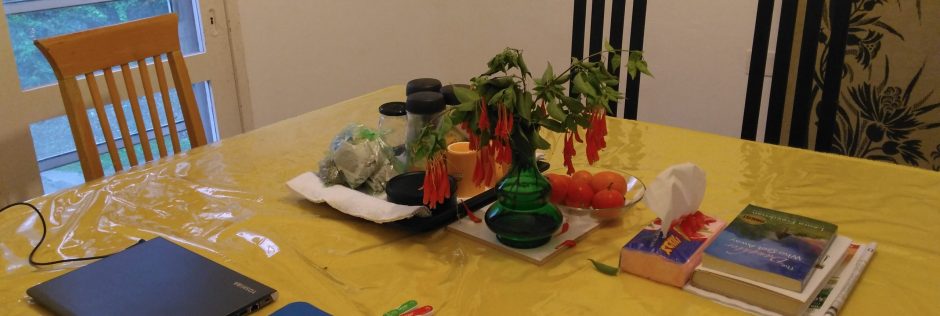
In the 1930’s, during the Great Depression, Flora Feuerstein was a high school teacher in a poor Jewish neighbourhood in New York City. The children did not have enough to eat or sufficient clothing, so the teachers collected things to leave with the families, saying they came from another source. One of these students was later known as Ezra Jack Keats, the author and illustrator of children’s books. Ezra argued politics with his teacher Mrs. Feuerstein. He said to her once, “You’re a nice lady who thinks she can bail out a leaky rowboat with a silver teaspoon. And by the way, I never eat any of that surplus food from your father’s farm.” Flora’s father did not have a farm. She later learned that the French teacher had concocted this means of donating food to Ezra’s family.
The principal, Isaac Solomon, gave a free “great books” course after school for all interested students. The teachers were similarly dedicated. Flora and her colleague Esty were the first public school Hebrew teachers in the city of New York, and both were recently married. They made a pact to alternate their pregnancies (and thus maternity leaves) so the teaching of Hebrew would continue. It was decided that Flora would get pregnant first, as she’d been married a year longer. When it took her many months to conceive, Esty accused her of holding out.
Many students from this school went on to become successful. When he was sixteen, Ezra won a prize for an oil painting of poor men slumped against a dark building, the scene portrayed in angular, cubist-inspired forms. He gave the painting to Flora, who kept it hanging in her living room for the rest of her life. Keats’s father was fearful of the poverty his son might endure as an artist, though Ezra persisted and became well off. Another boy’s mother once came to Flora to explain that her son, who’d been admitted to Harvard, wouldn’t go, as the family couldn’t afford to keep him there. “You feed him at home,” Flora countered, but the mother replied in Yiddish: “At home we just put another spoon on the table.”
Decades later, African-American people moved into the neighbourhood, and students complained that Hebrew was offered at the school but not any of their languages. So Isaac Solomon, who was still the principal, asked them what language they wanted to study. They told him Swahili. He couldn’t find a Swahili teacher, so he taught himself Swahili and then taught the language to these students. Ezra also wrote and illustrated a book called A Snowy Day, about a black child named Peter who has adventures in the newly fallen snow.
Flora and Isaac remained close, and she thought their friendship exemplified her theory that a man and a woman could be friends without a romantic or sexual interest. Yet after Isaac died, she learned from mutual friends that he had been deeply in love with her all his life. She hadn’t known.
Copyright © Leora Freedman 2014
First published in the Southern Humanities Review
***If you have something to say, or a story to share, our comments page is the place to leave it!
 Copyright secured by Digiprove © 2014 Leora Freedman
Copyright secured by Digiprove © 2014 Leora Freedman 
